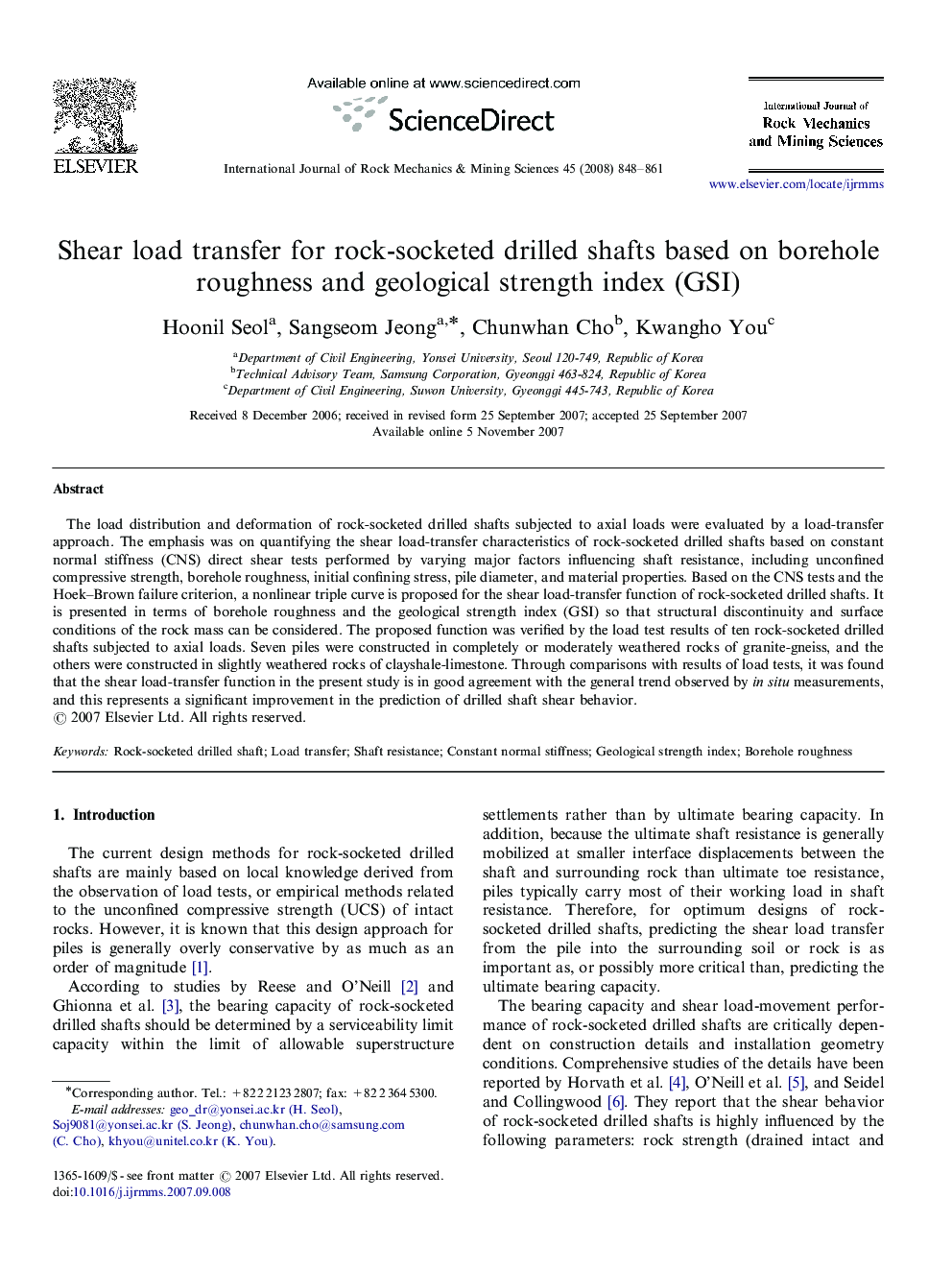| Article ID | Journal | Published Year | Pages | File Type |
|---|---|---|---|---|
| 810382 | International Journal of Rock Mechanics and Mining Sciences | 2008 | 14 Pages |
The load distribution and deformation of rock-socketed drilled shafts subjected to axial loads were evaluated by a load-transfer approach. The emphasis was on quantifying the shear load-transfer characteristics of rock-socketed drilled shafts based on constant normal stiffness (CNS) direct shear tests performed by varying major factors influencing shaft resistance, including unconfined compressive strength, borehole roughness, initial confining stress, pile diameter, and material properties. Based on the CNS tests and the Hoek–Brown failure criterion, a nonlinear triple curve is proposed for the shear load-transfer function of rock-socketed drilled shafts. It is presented in terms of borehole roughness and the geological strength index (GSI) so that structural discontinuity and surface conditions of the rock mass can be considered. The proposed function was verified by the load test results of ten rock-socketed drilled shafts subjected to axial loads. Seven piles were constructed in completely or moderately weathered rocks of granite-gneiss, and the others were constructed in slightly weathered rocks of clayshale-limestone. Through comparisons with results of load tests, it was found that the shear load-transfer function in the present study is in good agreement with the general trend observed by in situ measurements, and this represents a significant improvement in the prediction of drilled shaft shear behavior.
